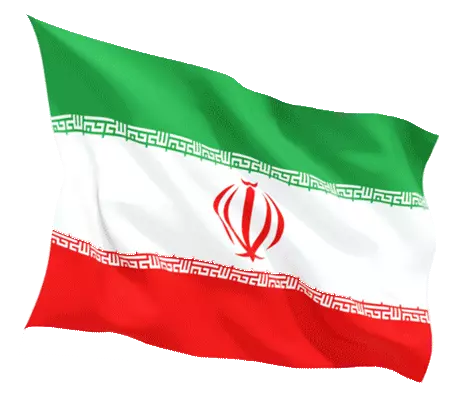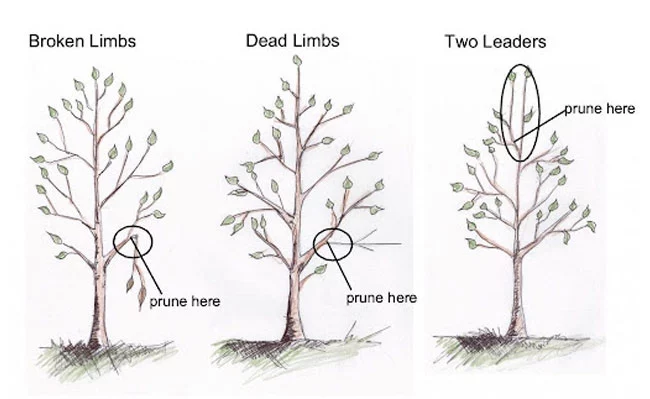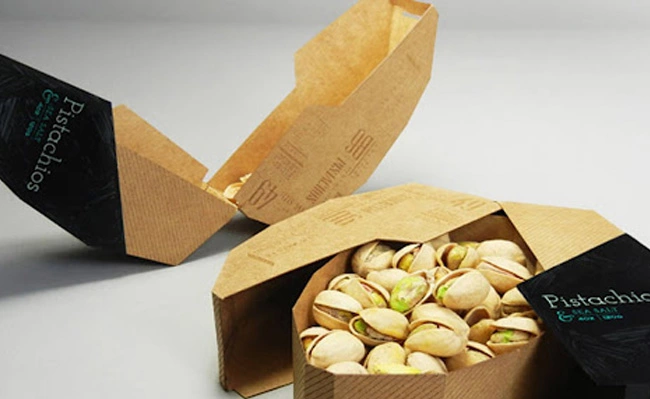Pistachio tree cultivation has been increasing in recent years. Interests in pistachio products and pistachio health benefits and culinary applications have increased. Many growers have decided to shift from other plants to establish young pistachio orchards.
This article focuses on starting a new pistachio orchard from scratch. We explain the pistachio cultivation requirements. We also consider the types of cultivars to use, the weather, water, soil requirements, and planting techniques. We will be talking about how to market your pistachios. We end the article by answering a few questions.
Enjoy reading!
Popular Pistachio Cultivars
We assume you live in one of the top pistachio producing countries. One of the important factors in top pistachio-producing countries is the development of new cultivars. But you can grow pistachios anywhere. You always need fertile cultivars for your groves. Below is a short description of some popular cultivars and how they contribute to each country’s pistachio production.

Iranian Pistachio Cultivars
Pistachio cultivation in Iran is thousand years old. There are many pistachio cultivars in the country. The exact number of female cultivars stands at 100 as of 2022. Unfortunately, there is no one industry standard male cultivar in the country.
The five commercially popular Iranian pistachios include Akbari, Kalle Ghouchi, Fandoghi, Badami, and Ahamd Aghaie. These cultivars are responsible for most pistachios produced in the country. Among them, Fandoghi is the most cultivated one.

American Pistachio Cultivars
Pistachio cultivation in the U.S. in the last 60 years has solely relied on a single cultivar, Kerman. It was introduced to the U.S. from Iran. “Kerman” is the dominant female cultivar in California, where 90% of the U.S.’s pistachio is produced. It has been a reliable female variety for building a world-famous pistachio industry. Peters is the standard male cultivar.
A few problems associated with Kerman have been the cause of concern among pistachio growers. These problems have also been the focus of research in pistachio stations. Two of these problems include 1) a relatively high percentage of blank and 2) unsplit nuts. Unsplit nuts are closed nuts containing edible kernels.
A few varieties are being experimented on with fewer weaknesses and better yields than Kerman. You can find about them in American Pistachios.

Turkish Pistachio Cultivars
Turkey is now considered a major producer of pistachio nuts in the world. Turkish pistachio cultivation relies on a few female cultivars, including ‘Kirmizi,’ ‘Uzun,’ ‘Halebi,’ and ‘Siirt.’
In addition, a few Iranian female cultivars have been experimentally used to develop a high-producing cultivar, such as Ohadi, Akbari, and Kalle Ghouchi.
8 Things to Consider Before Planting Pistachios
Pistachio cultivation is one of the most fascinating practices in the field of horticulture. Say you have decided to plant your pistachio grove from scratch. Let’s see what you need to consider beforehand, and what to do after you have planted your trees.
1. Time and Patience
Time and patience are essential for growing pistachios. Patience is especially important because you may not see your first pistachio nuts until about the 6th or 7th leaf. Or when your trees become 5 to 6 years old. It will take about 9 – 10 years before your trees start to show a good yield of pistachios. And you need 15 -20 years before they reach peak production.
Note: Note: Nut and fruit tree age is usually measured in “leaves” rather than “years.” For example, 1st leaf, 2nd leaf, or 6th leaf instead of 1-year-old, 2-year-old or 6-year-old. The age of a pistachio tree is 1st leaf at planting, and it does not become one year old until the 2nd leaf.
2. Climate
Of all factors, the climate decides whether you should go ahead with your pistachio cultivation venture in a particular region. This is how:
- Chilling time. Pistachio is a little demanding about its climate necessities. Pistachio trees thrive in areas with long hot summers (above 38°C) and moderately cold winters. Generally, the pistachio trees must experience certain hours of cooling to break the bud’s dormancy (known as the torpid period). The duration of the chill time varies with variety. For example, the early-blooming Kalleh Qouchi cultivar requires less chill time than the late-blooming Akbari cultivar. Akbari cultivar needs to experience 1200 hours below 7°C to have bud breaks and excellent fruit sets. Pistachio trees don’t do well in high heights with long winters or where the temperature falls below -9 °C.
Pistachio trees don’t do well in high heights with long winters or where the temperature falls below -9 °C.
- Summer heat. Pistachios need a long hot summer (mostly sunny days) to reach fruit maturity. Depending on the variety, pistachios need to receive between 2200 to 2800 units of heat to ensure that flowers develop and fruit ripens. Sami-dried weather conditions of Kerman province in the middle of the Iran plateau are ideal in this case. On the other hand, Alpine areas and regions that are too close to the coast or too far north may be unsuitable.
- Wind. While pistachios can stand wind, strong wind when trees are young makes tree training a difficult undertaking. Also, heavy winds during cropping may cause cracked branches. It can result in decreased yields during flowering (mid-April).
- Humidity. The incidence of bacterial and fungal diseases increases with moisture, especially in the growing season. Diseases are likely to over-winter and recur the following season. Hence, coastal areas and regions receiving more than 20 mm of summer rain per month are unsuitable for pistachio production.
3. Soil
You need specific soil analysis and careful preparation before you start planting. Soil properties such as clay content, depth, structure, and previous use, can affect the future success of new plantings.
While pistachio trees will grow in most soils, shallow soils, heavy clay, or light sand may limit the tree size and nut production. Pistachios are more tolerant of slightly saline and alkaline conditions than other nut trees. However, they prefer deep, well-drained fertile soils with a neutral pH. A rooting depth greater than 60 cm is ideal for commercial pistachio cultivation.
4. Water
Pistachio trees are desert-native. They can endure drought. They are deep-rooted trees but highly susceptible to water stagnation.
Pistachio trees are higher-yielding when good quality water is available by irrigation most of the year. For example, pistachios need 11 to 13 megaliters (ML) of water per hectare during the growing season. After that, they need dry summers. Excessive summer rain is harmful to the maturing nuts.
5. Pistachio Cultivar
The variety of pistachio you used for your grove will affect the marketability of your pistachios. For example, American pistachios are, on average, larger and plumper than Iranian or Turkish pistachios. But they are less tasty and nutty. Desirable taste and flavor are going to attract more customers to your products.
6. Planting Techniques
When the soil has been provided as required, the planting sites and tree lines are marked. Then the irrigation system is installed. The tree lines should be weed-free before planting.
Nursery trees are usually produced indoors in pots. The pots are carefully removed to avoid root agitation. The tree is located in the planting hole high enough (1 inch lower than it was in the nursery) to let it settle in the soft soil.
Pistachio trees are planted in a grid pattern. They should be spaced 6 meters × 6 meters so that pruning can be done or weeding equipment can maneuver freely. Male and female pistachio plants should be planted at a 1:8 ratio to produce pistachio nuts.
7. Training and Pruning
Tree training is an agricultural practice you use to form your pistachio tree into the desired shape as it grows (figure 1). You may use pruning techniques and limb positioning to alter the structure of a young pistachio tree. The resulting shape is beneficial for both you and the tree.
Tree training is essential for the proper development of pistachio saplings (very young pistachio trees).

8. Harvesting
Six years have passed since you planted your pistachio trees. Your pistachio cultivation venture is now coming to pay you off. Get ready to reap the reward!
Typically, pistachios are best harvested within a 2- to 3-week period to have a high-quality crop. During “on years,” the availability of harvest equipment, labor, processing, and storage facilities is detrimental. The “shake and catch” harvesting method (figure 2) uses a mechanical tree shaker and catching frame to collect the pistachio nuts. It is an excellent way to shorten the transfer time from the field to the processing plant. It produces more pure pistachios while reducing the likelihood and number of pistachio nuts going bad after harvest.

The shake and catch harvesting method can damage young trees.So the pistachios on them should be carefully knocked onto tarps with mallets and poles.
Post-harvest
The nuts should be transferred to silos immediately and kept in a cool room at all times.
Fresh pistachios rot rapidly after harvest. Producers should have easy access to cold storage or suitable markets if the pistachios are going to be used fresh. Or they should have access to the hulling and drying processor if the nuts are turned into dried snacks.
Pistachios intended for the fresh markets should be cleaned and sorted. All branches, leaves, other detritus, and defects are removed before being packaged.
Those pistachios used to make food ingredients should be hulled and shelled immediately.
Pistachio Price
If you are growing pistachios for personal use, the price should not concern you much. But, for commercial purposes, many factors affect your pricing policy. Pistachio price is mainly affected by supply and demand, proximity to the market, quality of the nuts, packaging, and pistachio type.
Supply and Demand: In “on years” (when tree nuts have peak production), the excess supply reduces the price. Besides, the competition for harvesting workers and equipment will be intense.
The demand for fresh pistachio nuts will rise in off years due to lower production and supply.
Market
Proximity to the market also affects the price. You will not be the only person growing pistachio in your area. So there are already established channels or connections to help you market your crop.
Quality
Quality can mean your pistachios have the taste and flavor consumers desire. In this respect, quality means nutrition facts such as protein, minerals, fats, carbs, and fiber.
Quality can also mean complying with a series of standards, depending on where you market your pistachios. Pistachio nuts need to be physically healthy to be accepted in a particular market. There is also a minimum aflatoxin requirement that you need to respect.
Consider the following criteria for naturally split, in shell pistachio nuts sold in many markets: Pistachios need to be free from:
(i) Foreign material
(ii) Loose kernels
(iii) Shell pieces
(iv) Particles and dust
(v) Blanks
Packaging
Packaging plays a vital role in attracting consumers to your pistachios (figure 3). Good packaging influences the customer’s behavior. So it increases the sale directly while reducing the cost of marketing and advertising.

Conclusion
It is vitally important to instill patience before going ahead with your pistachio cultivation plan. You need to educate yourself on the ecology and horticulture of pistachios if you want to be successful. Also, you need to study the market and decide on a good price.
We hope your pistachio nut cultivation venture brings you success.Please write your comments in the comment section, and share this article with your friends.
FAQ


I would also like to know.
Thank you, very informative. Do you any advise for growing pistachios from seed in pots. Many thanks.
Where can I buy pistachio trees in South Africa
Good day.
Where can I buy pistachio trees in South Africa?